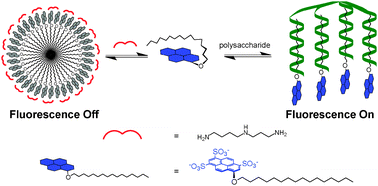A fluorescence assay that detects long branches in the starch polysaccharide amylopectin†
Abstract
Long α(1–4)-linked glucopyranose branches in the starch polysaccharide amylopectin can be detected by the specific binding of an anionic amphiphilic fluorescent probe. The probe forms spermidine-stabilised micelles in water resulting in fluorescence quenching. By extracting the probe from the micelles polysaccharides are detected in a “turn-on” fluorescence assay.


 Please wait while we load your content...
Please wait while we load your content...